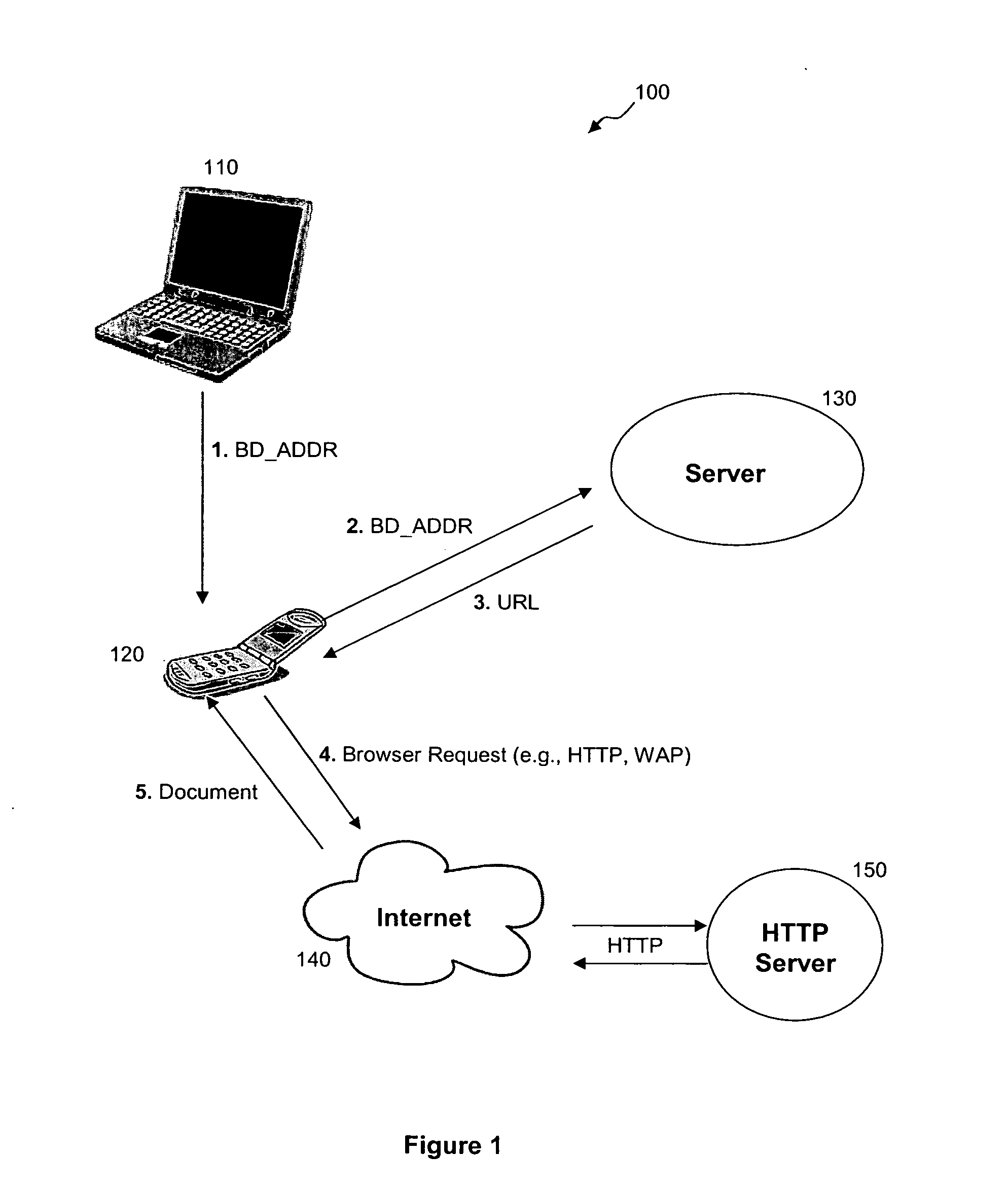Method and system for proximity-based information retrieval and exchange in ad hoc networks
a technology of proximity-based information and network, applied in data switching networks, instruments, assess restrictions, etc., can solve the problems of reducing the number of instances, consuming relatively large amounts of cpu time, memory and storage, and reducing the number of redundant discoveries of the same clients, so as to reduce the number of instances and improve privacy. the effect of the effect of the improvemen
- Summary
- Abstract
- Description
- Claims
- Application Information
AI Technical Summary
Benefits of technology
Problems solved by technology
Method used
Image
Examples
Embodiment Construction
[0027] Referring to FIG. 1, there is shown network 100 having server 130 and several clients 110, 120. The present invention is not limited to having only one server; multiple servers may function in the present invention. In this particular embodiment, primary client 120 is a Bluetooth enabled cellular phone, and secondary client 110 is a Bluetooth enabled laptop computer. Bluetooth technology enables a device equipped with a Bluetooth transceiver to recognize devices that are also equipped with Bluetooth transceivers (see http: / / www.bluetooth.com / tech / works.asp). Bluetooth employs a type of discovery in which a discovering client uses its recognition equipment to discover other clients, and the result is that the discovering client gains identifying information about the discovered clients. In the present invention, primary client 120 discovers (step 1) secondary client 110, which results in primary client 120 acquiring secondary client's 110 identifying information. The identifyi...
PUM
 Login to View More
Login to View More Abstract
Description
Claims
Application Information
 Login to View More
Login to View More - R&D
- Intellectual Property
- Life Sciences
- Materials
- Tech Scout
- Unparalleled Data Quality
- Higher Quality Content
- 60% Fewer Hallucinations
Browse by: Latest US Patents, China's latest patents, Technical Efficacy Thesaurus, Application Domain, Technology Topic, Popular Technical Reports.
© 2025 PatSnap. All rights reserved.Legal|Privacy policy|Modern Slavery Act Transparency Statement|Sitemap|About US| Contact US: help@patsnap.com



